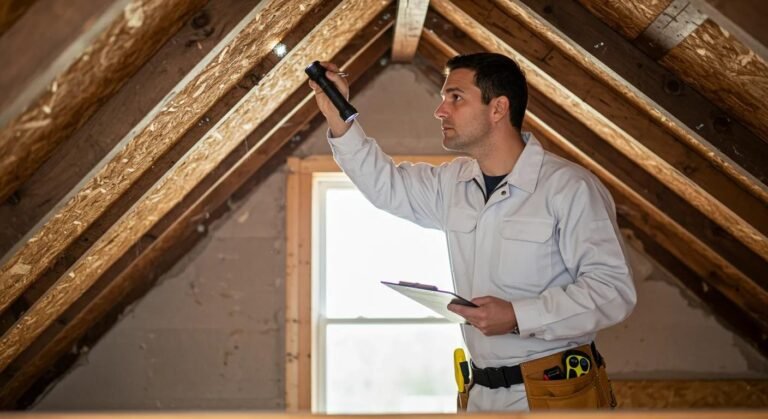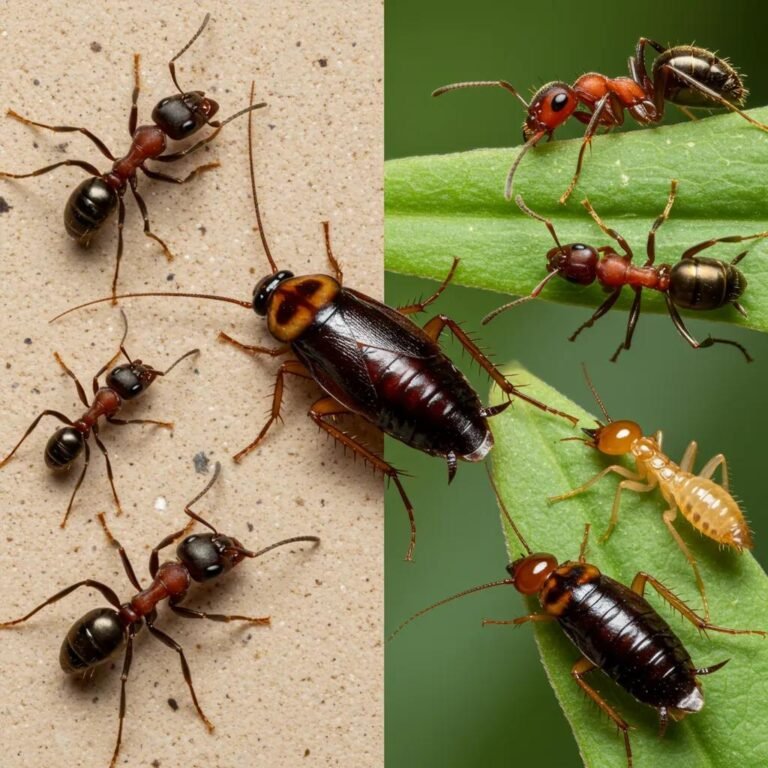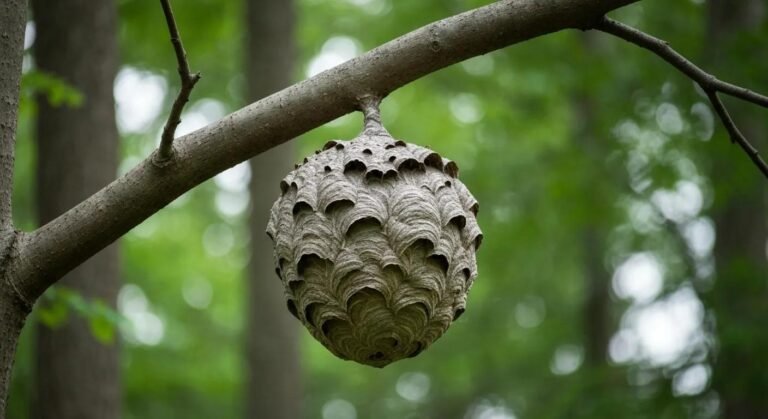Fleas can stay behind long after pets leave. The pupal stage is the biggest concern — those cocoons can lie dormant for months and hatch once conditions or hosts return. This guide walks you through how long fleas survive without a host, which life stages are toughest to stop, and clear, practical steps to prevent an infestation from restarting. You’ll get a simple overview of the flea life cycle, survival ranges for eggs through adults, how South Florida’s warm, humid weather affects survival, signs to watch for in homes without pets, and why many DIY fixes don’t break the cycle. We also include a local note about professional help from Bugsy’s Pest Solutions and a checklist covering prevention, attic sanitation, and insulation options so you can decide whether to treat a vacant property or call for an inspection. Keep reading for timelines, checklists, and next steps to protect an empty or pet-free home from lingering fleas.
Bugsy’s Pest Solutions is veteran‑owned and family‑run in South Florida. We offer eco‑friendly, pet‑ and family‑safe flea control and provide free estimates for homeowners worried about vacant or pet‑free properties. That local experience frames the practical advice below and points to professional IPM options if you find evidence of fleas during an inspection.
What Are the Flea Life Cycle Stages and Their Survival Times Without a Host?
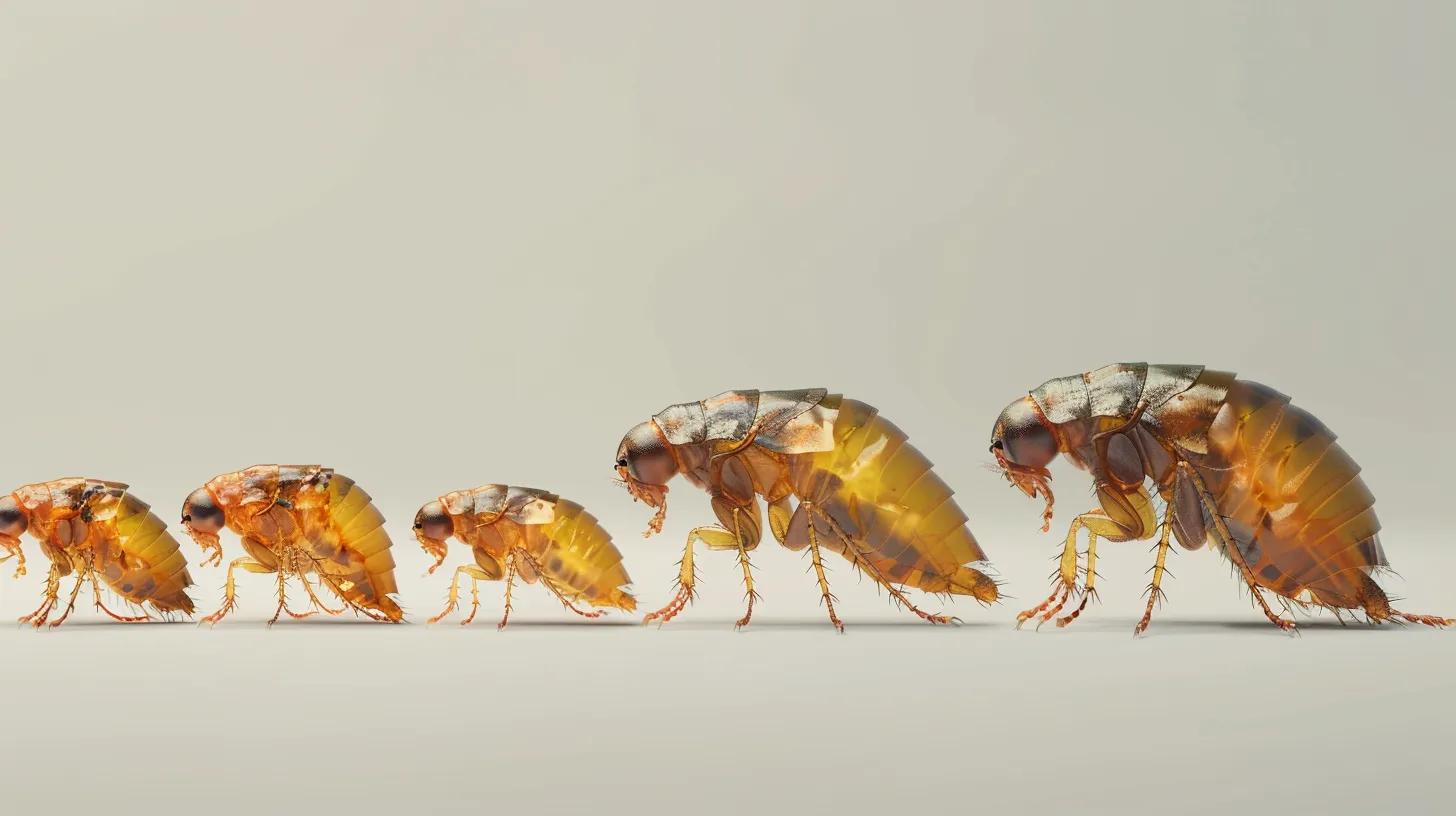
Fleas go through four stages — egg, larva, pupa, and adult — and each stage survives differently without a host. Eggs drop into carpets, cracks, and furniture and hatch when temperature and humidity allow; larvae feed on organic debris and flea dirt; pupae spin cocoons and can stay dormant for months; adults need blood meals to reproduce but may live days to a few weeks while waiting for a host. Knowing these differences helps you target treatments that actually interrupt the life cycle instead of only removing visible adults. The table below summarizes typical survival times, vulnerabilities, and common controls for each stage so you can decide where to focus your efforts.
Flea Life Cycle: Duration and Environmental Factors
The flea’s life cycle is complete metamorphosis. Under ideal warmth and humidity it can finish in as little as 14 days, but in less favorable conditions the cycle can stretch to about 140 days (Silverman et al. 1981b). Most flea species move through three main phases: egg hatching, development from larva to pupa, and pupal development into an adult (Linardi et al. 1997).
| Life Stage | Typical Survival Time Without Host (Indoor) | Vulnerability & Control Notes |
|---|---|---|
| Egg | 2–14 days to hatch under favorable conditions | Vulnerable to heat, washing, and vacuuming before hatching; often hidden in carpets and bedding |
| Larva | 5–20 days while feeding on organic debris | Susceptible to drying, sunlight, and cleaning; targeted vacuuming removes their food source |
| Pupa (cocoon) | Weeks to many months; can persist up to a year in dormancy | Protected by a sticky cocoon; resistant to many sprays; emergence triggered by vibration, CO₂, or warmth |
| Adult | 1–2 weeks without a blood meal in many cases | Needs a host to reproduce; removing hosts and treating them stops egg production |
That comparison makes it clear why pupae are the main reason fleas reappear and why an integrated approach is needed to break the cycle.
How Long Do Flea Eggs Survive and When Do They Hatch?
Flea eggs usually hatch in 2–14 days when temperature and humidity are right. Although short‑lived, eggs are laid on hosts and fall into the environment — carpets, bedding, upholstery seams, baseboards, and gaps — so they often remain after pets leave. Homeowners can reduce hatching by washing fabrics in hot water, vacuuming carpets and crevices thoroughly, and lowering indoor humidity where practical. These cleaning steps remove eggs and slow the flow into larval stages, which in turn limits pupal development and future adult emergence. Regular cleaning pairs well with targeted insecticides or insect growth regulators (IGRs).
How Do Flea Larvae Survive Without a Host and What Do They Eat?
Flea larvae don’t drink blood — they eat organic debris, skin flakes, and adult flea feces (flea dirt). Their survival depends on that microhabitat rather than a live host. Larvae prefer dark, humid spots like under furniture, inside carpets, and in insulation where debris accumulates. They’re vulnerable to drying and sunlight. Mechanical removal — vacuuming edges, furniture seams, and laundering fabrics on high heat — cuts larval survival. Depriving larvae of food and exposing them to dryer conditions collapses this stage of the life cycle.
Why Are Flea Pupae the Most Resilient Stage Without a Host?
Pupae sit inside a sticky, layered cocoon that collects dust and debris, shielding the developing flea from contact sprays and environmental stress. That cocoon plus biological dormancy lets pupae wait out unfavorable periods. Pupae may remain dormant for weeks to many months — sometimes up to a year — and only emerge when cues like vibration, CO₂, or warmth signal a host nearby. That’s why single treatments often fail: you can kill adults now, but pupae can hatch later and repopulate the space. Effective control uses staged interventions timed around emergence, IGRs to stop reproduction, and sanitation to reduce cues and food sources.
How Long Can Adult Fleas Live Without a Host and Why Is a Blood Meal Essential?
Adult fleas need blood to survive long‑term and to lay eggs. Without a host, many adults survive about 1–2 weeks, though warm, humid conditions can extend that. Adults will bite humans or wildlife passing through a home, which can create the impression an infestation continues even without pets. Treating hosts (when present), using traps or targeted sprays in high‑traffic spots, and excluding wildlife reduce immediate bites and stop new eggs. Removing adults is important, but it won’t address eggs, larvae, or pupae already in the environment — that’s why a combined approach is required.
How Long Can Fleas Live in a House Without Pets or Hosts?
In a pet‑free house, the long‑term risk comes from pupae and environmental reservoirs in carpets, furniture, and insulation that can wait for a new host. Pupae can remain dormant through vacancy and hatch when occupants, visitors with pets, or wildlife produce vibrations and CO₂; adult fleas then feed and restart reproduction. Other factors include transient human hosts and small mammals that access crawlspaces, attics, or wall voids. For vacant or pre‑move scenarios, inspection checklists and targeted preventive treatments reduce the chance the home will host an active infestation when people arrive.
Can Fleas Survive in an Empty House or Vacant Property?
Yes — especially as pupae. In an empty home, pupae hidden in carpets, insulation, or furniture can sit for months and then hatch when conditions improve or a host appears. During vacancy, indoor humidity and temperature stability matter; shaded rooms and insulated attics can create microclimates that favor pupae. A routine inspection for vacant properties should include carpet and upholstery checks, attic and crawlspace assessments, and signs of rodents or nesting material. If you see evidence, or as a preventive measure before re‑occupancy, coordinate cleaning and professional preventative treatment to avoid an emergence‑driven reinfestation.
What Is the Role of Humans and Non‑Pet Hosts in Flea Survival?
Humans can act as temporary hosts for adult fleas, showing up as itchy bites even without pets in the house. Rodents and wildlife — raccoons, opossums, and rats — commonly carry fleas indoors. These alternate hosts give adults feeding opportunities that extend survival and enable egg laying in the environment. Exclusion steps — sealing entry points, fixing screens, and limiting attic or crawlspace access — combined with yard maintenance reduce wildlife introductions. Spotting wildlife activity or human bite patterns helps decide whether treatment should also focus on structural exclusion and sanitation alongside insecticidal measures.
Fleas are a top concern, but other pests matter too. For example, effective ant control is often part of keeping a South Florida home pest‑free.
How Does South Florida’s Climate Affect Flea Survival Without a Host?
South Florida’s warm, humid climate shortens flea development times and keeps activity higher year‑round than in cooler regions. Higher humidity reduces drying of eggs and larvae, and steady warmth makes pupae more likely to emerge when hosts arrive. That local reality means prevention needs to be continuous — not just seasonal — so vacant‑home protocols and regular monitoring matter more here than in temperate areas. Homeowners in South Florida should schedule regular inspections and consider professional IPM plans that account for these constant favorable conditions.
While South Florida’s weather favors fleas, it also creates challenges from other pests. Managing outdoor nuisances like mosquitoes with professional mosquito control is another part of comprehensive pest management in the region.
What Are the Signs of Flea Infestation in Homes Without Pets?
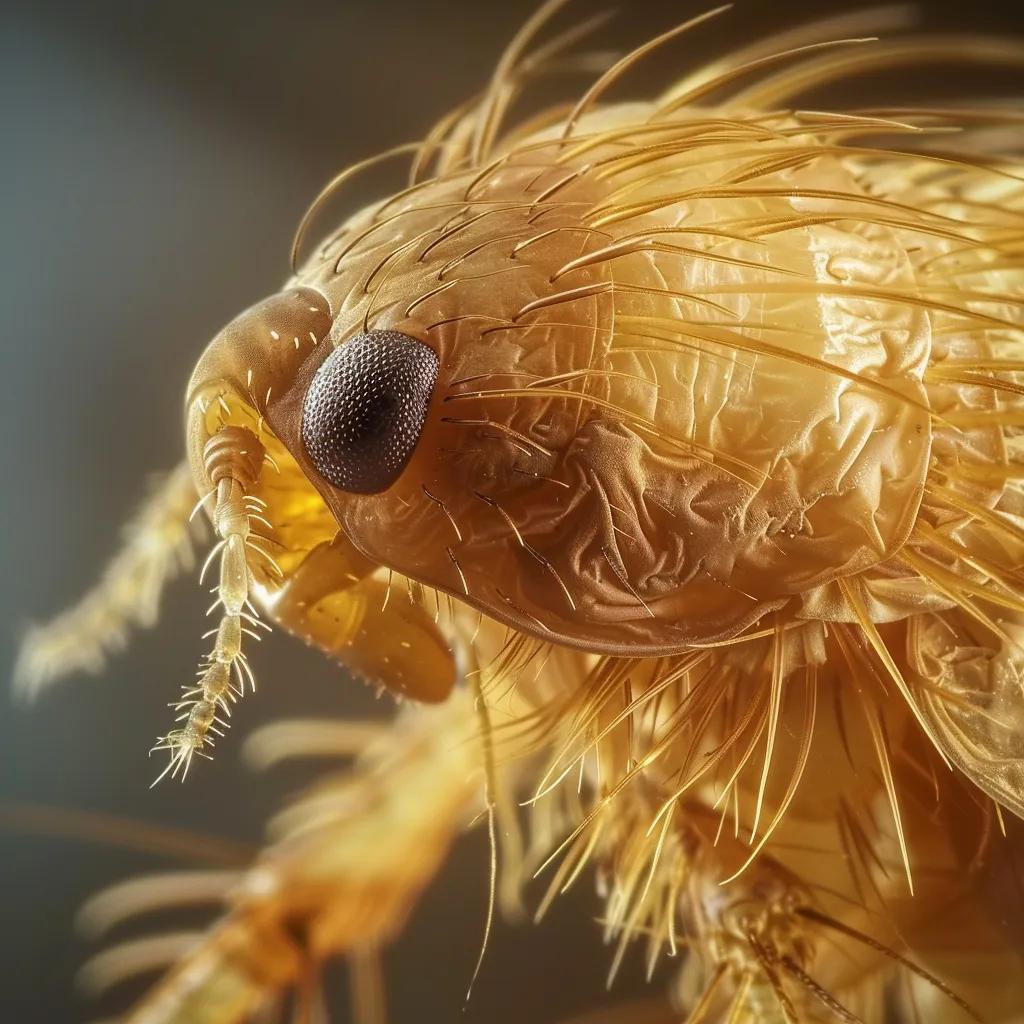
Finding fleas in a pet‑free home means watching for human bite patterns, flea dirt, and small jumping insects in carpets or on furniture. Flea bites are typically clustered, itchy, and often show up around the ankles or lower legs; flea dirt looks like tiny black specks that turn reddish when wet. Simple home inspections — using white paper under bedding, combing fabrics, and checking baseboards, upholstery seams, and attic insulation — help confirm presence. Early detection lets you clean and call for professional help before pupae emerge all at once.
Here are common signs and easy tests you can do at home to confirm fleas.
- Clustered, Itchy Bites on People: Flea bites often appear in groups and itch, commonly on lower legs and ankles.
- Flea Dirt in Bedding or Carpets: Tiny dark specks that leave a reddish mark when moistened indicate digested blood.
- Visible Jumping Insects: Small, fast‑moving jumpers in carpets or on upholstery suggest active adult fleas.
How to Recognize Flea Signs on Humans and in Your Home Environment?
Flea bites usually show up as small red bumps that itch and often cluster; they can be mistaken for mosquito or bedbug bites, so pair bite signs with environmental checks. Home tests include combing bedding or clothing over white paper to catch small specks, then moistening them to see if they “bleed” (a sign of flea dirt). Check carpets, area rugs, baseboards, and under furniture, and inspect attic insulation and crawlspaces for rodent nesting or debris that can harbor life stages. Document what you find — photos and notes help technicians target treatments and decide if follow‑up inspection is needed.
Key observations and home tests to remember:
- Clustered, Itchy Bites on People: Flea bites often appear in groups, usually on lower legs and ankles.
- Flea Dirt in Bedding or Carpets: Tiny dark specks that leave a reddish mark when moistened indicate digested blood.
- Visible Jumping Insects: Small, quick jumpers in carpets or upholstery point to active adults.
What Are the Common Flea Infestation Symptoms on Pets?
Even if you don’t have pets now, it helps to know common pet symptoms: persistent scratching, hair loss, irritated or red skin, and visible flea dirt in the fur. Pets that go outside or encounter wildlife are at higher risk and can quickly bring fleas into a clean home. Veterinarian‑recommended preventatives are the first line of defense for animals. Pairing pet treatment with home sanitation and professional pest control offers the most reliable protection for both pets and people. Coordinating pet care with home prevention lowers the chance a new pet will trigger a full reinfestation.
Why Do DIY Flea Control Methods Often Fail Without Addressing All Life Stages?
DIY efforts usually target visible adult fleas with sprays or traps, but pupae are protected in cocoons and eggs and larvae hide in fabrics and insulation — so one‑time treatments often miss the hidden stages. Many store products lack insect growth regulators (IGRs) to stop eggs from maturing or don’t provide the residual timing needed for emerging adults. Environmental reservoirs — shaded yards, attic insulation, and rodent nests — are out of reach for surface sprays. Breaking the life cycle reliably takes staged interventions, sanitation, exclusion, and often professional tools and follow‑up monitoring.
| Treatment | Targets Life Stage | Expected Effectiveness / Notes |
|---|---|---|
| Vacuuming | Eggs, larvae, some adults | Removes debris and many immature stages but needs repeating and proper disposal of contents |
| Over‑the‑counter sprays | Adults and surface contact stages | May kill exposed adults but often won’t reach pupae inside cocoons or deep fabrics |
| Diatomaceous earth | Larvae and adults (abrasive) | Works where applied but loses effectiveness in humid conditions and acts slowly |
| IGRs and professional IGR applications | Eggs and newly emerged adults | Breaks the reproduction cycle; most effective when combined with inspection and sanitation by pros |
This quick comparison shows why integrated, timed professional approaches that use IGRs and structural inspection usually outperform one‑off DIY efforts.
What Makes the Pupal Stage Resistant to Common DIY Treatments?
The pupal cocoon is sticky and covered with debris, insulating the developing flea from contact insecticides and environmental stress. Pupae can wait out chemical exposures and hatch later when cues return. Many chemicals don’t penetrate the cocoon, and pupae only emerge with vibration, CO₂, or warmth, letting them avoid short‑term DIY treatments. Effective plans include repeated treatments or using growth regulators to stop reproduction once adults emerge, plus measures to reduce emergence cues and remove sheltering debris. Knowing how resilient pupae are explains why follow‑up treatments and monitoring matter.
How Do Environmental Factors Limit DIY Flea Control Effectiveness?
Warm, humid microclimates in attics, under furniture, and inside insulation protect flea stages and let populations rebound after surface sprays; shaded yards and rodent nests near foundations act as reintroduction sources. DIY surface treatments don’t reach deep into insulation, wall voids, or tightly woven upholstery where eggs and pupae hide. Many DIY plans also miss the correct sequencing — inspect, treat, follow up, exclude — needed to prevent reinfestation from wildlife or structural reservoirs. A professional assessment can find hidden habitats and design a plan that pairs sanitation with targeted applications for better long‑term results.
How Can Professional Flea Extermination Services Effectively Control Fleas Without a Host?
Professional services use Integrated Pest Management (IPM): inspection, targeted treatments, insect growth regulators, exclusion, sanitation, and monitoring to tackle every life stage and structural reservoir. This multi‑step approach handles pupal dormancy by timing treatments and using IGRs to stop reproduction when adults emerge. Attic sanitation and insulation replacement remove hidden reservoirs. Professionals also offer eco‑friendly, pet‑ and family‑safe options that balance effectiveness with safety. The table below breaks down common service components and why they matter for vacant or no‑pet properties.
| Service Component | Benefit | Why It Matters for Vacant/No–Pet Properties |
|---|---|---|
| Detailed inspection | Identifies hotspots and reservoirs | Finds pupae in carpets, furniture, insulation, and rodent nests so treatments are focused |
| IGR application | Prevents eggs from maturing | Stops reproduction even if pupae hatch after the first treatment |
| Attic sanitation & insulation replacement | Removes contaminated nesting material | Eliminates long‑term reservoirs in insulation and prevents future wildlife nesting |
| Follow‑up monitoring & exclusion | Ensures treatments worked and blocks reintroduction | Detects emergent adults and seals entry points to reduce wildlife‑mediated returns |
This breakdown shows how layered professional services fill the gaps that make DIY methods fall short.
What Integrated Pest Management Techniques Does Bugsy’s Use for Flea Control?
Bugsy’s Pest Solutions follows a science‑based IPM routine: a careful inspection to find hotspots, targeted adult treatments, IGR applications to stop the life cycle, and attic sanitation or insulation work when needed. Technicians use eco‑friendly, pet‑ and family‑safe products and schedule follow‑ups to catch adults that hatch from dormant pupae. In local cases we’ve seen, removing rodent nests and replacing contaminated insulation lowered reintroduction risk and shortened follow‑up cycles. That stepwise approach — inspect, treat, prevent — focuses on long‑term control rather than short‑term relief.
How Do Eco‑Friendly and Pet‑Safe Treatments Improve Flea Extermination Outcomes?
Eco‑friendly, low‑toxicity products reduce risk to children and pets while remaining effective when used inside an IPM program that includes IGRs and mechanical sanitation. These options fit with ongoing pet prevention plans and make it easier for homeowners to keep protective measures in place. When technicians apply targeted, lower‑toxicity sprays with IGRs and sanitation, results improve because all life stages are addressed without unnecessary exposure to occupants. That balance of safety and effectiveness is central to modern flea management.
What Is the Typical Cost of Professional Flea Extermination in South Florida?
Pricing depends on infestation level, property size, access to reservoirs (attic, crawlspace), and whether attic sanitation or insulation work is required. Because costs vary, professionals recommend scheduling a free estimate so the scope — inspection, treatment plan, follow‑ups, and any insulation work — can be assessed on site. Ask for an itemized estimate to see which services are needed and how follow‑ups are billed; that helps homeowners plan for effective, long‑term control. A free estimate is the best way to get a locally accurate cost projection.
Short South Florida example: a homeowner with a vacant property found pupae in attic insulation; coordinated attic sanitation, IGR application, and sealing entry points prevented reinfestation when new occupants arrived. That case shows why multi‑step professional plans are often the most reliable choice.
How Can You Prevent Future Flea Infestations in Homes Without Pets?
Preventing fleas in homes without pets depends on year‑round cleaning, wildlife exclusion, monitoring, and addressing structural reservoirs like attic insulation. A basic maintenance routine plus targeted checks cuts the risk that hidden pupae will turn into outbreaks when hosts arrive. Below are practical tasks homeowners can adopt — from vacuuming cadence to attic inspections — and how attic sanitation and insulation work fit into a long‑term plan. If you see wildlife signs or had a past infestation, coordinate home maintenance with professional inspections for best protection.
- Regularly Vacuum High‑Risk Areas: Vacuum carpets, rugs, and upholstery weekly in high‑traffic zones and empty vacuum contents into a sealed bag.
- Launder Bedding and Soft Furnishings: Wash textiles in hot water and dry on high heat to kill eggs and larvae.
- Maintain Yard and Exclude Wildlife: Keep grass trimmed, remove debris, and seal foundation and attic entry points to reduce wildlife nesting close to the house.
What Year‑Round Home Cleaning and Maintenance Practices Help Prevent Fleas?
Regular vacuuming of carpets and upholstery, frequent laundering of bedding, checking stored textiles, and prompt removal of rodent or wildlife nests form the backbone of prevention. Empty vacuum contents outdoors in a sealed bag and focus on seams, baseboards, and under furniture where eggs and larvae collect. Yard care — mowing, clearing leaf litter, and reducing shaded borders — lowers outdoor harborage. Following this routine reduces baseline flea numbers and the chance that dormant pupae will cause an outbreak when a new host arrives.
How Does Attic Insulation and Sanitation Contribute to Flea Prevention?
Attic insulation can hide rodent nests and flea life stages, creating a long‑term reservoir that survives routine cleaning or surface sprays. Sanitation and, when needed, insulation replacement remove those hidden sources. Signs of contamination include droppings, nesting material, or disturbed insulation; professionals coordinate attic work with pest control to address remaining life stages and reduce future nesting. Replacing contaminated insulation and sealing entry points not only cuts flea habitat but also improves insulation performance and reduces wildlife access, giving lasting prevention benefits.
Why Is Pet Flea Prevention Still Important Even Without Current Pets?
Even without pets now, future pets, visitors with animals, or wildlife can quickly reintroduce fleas. Maintaining readiness with veterinarian‑recommended preventatives and home sanitation protects both animals and people. Preventive vet products greatly reduce the chance a pet will import and sustain fleas, while home measures keep environmental reservoirs low. Combining responsible pet prevention with structural maintenance and monitoring provides the strongest defense for keeping homes flea‑free over time.
- Keep Prevention Integrated: Combine pet prevention, home sanitation, and professional inspection for the best protection.
- Monitor Year‑Round: In South Florida’s climate, periodic checks are important even when no pets are present.
- Use Professional Services When in Doubt: A free estimate and inspection reveal hidden reservoirs and reduce surprises when the home is re‑occupied.
What Year‑Round Home Cleaning and Maintenance Practices Help Prevent Fleas?
Consistent vacuuming and laundering, yard upkeep, wildlife exclusion, and periodic professional inspections make the home less hospitable to flea life stages. This routine supports targeted treatments when evidence appears and keeps risk low for future occupants or pets. If you’ve had a past infestation or wildlife problems, schedule a professional assessment and consider attic sanitation alongside pest control to remove long‑term reservoirs and prepare the home for re‑occupancy.
| Prevention Focus | Action | Outcome |
|---|---|---|
| Sanitation | Vacuum, launder, remove debris | Reduces eggs/larvae and food sources |
| Exclusion | Seal entry points, repair screens | Limits wildlife and rodent hosts |
| Structural | Attic sanitation, insulation replacement | Eliminates hidden reservoirs and nesting |
- Inspect before occupancy: Always do a pre‑move inspection and request a professional estimate if you find signs.
- Balance DIY and professional care: Use daily maintenance for prevention and professional IPM for confirmed or complex problems.
- Keep safety top of mind: Choose pet‑ and family‑safe products and coordinate treatments to minimize exposure.
These closing tips focus on practical, safety‑first choices homeowners can start using right away.
Conclusion
Understanding how long fleas can survive without a host is crucial for effective pest management in your home. By implementing consistent cleaning, monitoring, and professional pest control, you can significantly reduce the risk of flea infestations, even in pet-free environments. Don’t wait for an outbreak; take proactive steps to protect your home today. Contact Bugsy’s Pest Solutions for a free estimate and tailored solutions to keep your space flea-free.

